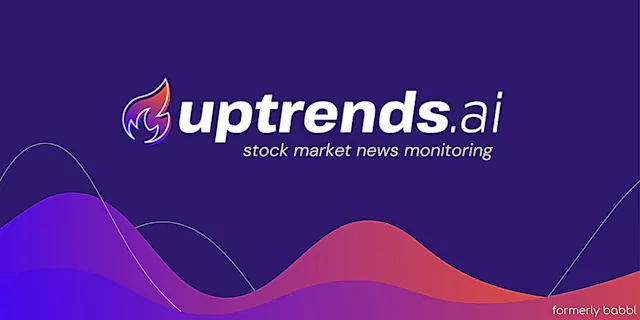The coverage of markets on the trading platforms that use AI analysis of stocks is vital as it determines the markets and assets you are able to access. A platform that has comprehensive market coverage can allow you to diversify your portfolios and discover global trading opportunities and adapt to different strategies. Here are the top 10 suggestions to evaluate the market coverage offered by these platforms:
1. Evaluate Supported Asset Classes
Stocks: Ensure the platform includes the major exchanges for stocks (e.g., NYSE, NASDAQ, LSE, HKEX) and includes small-cap mid-cap, and large-cap stocks.
ETFs. Verify that the platform has a wide selection of ETFs, so you have a diverse exposure.
Futures and options. Make sure the platform includes derivatives like futures, options and other instruments that leverage.
Forex and commodities: See whether your platform has Forex and commodities, precious metals and energy commodities.
Cryptocurrencies: Check to see if your platform supports the major copyright like Bitcoin, Ethereum and altcoins.
2. Check coverage of your area
Global markets: Make sure that the platform is inclusive of major global markets like North America, Europe and Asia-Pacific.
Regional focus: Find out if your platform has a specific area of focus or market that matches with your trading needs.
Local exchanges: Find out whether the platform supports regional or local exchanges that are relevant to your location or strategy.
3. Compare Real-Time vs. Delayed Data
Real-time data: Ensure the platform provides real-time market data for timely decision-making, especially for trading that is active.
Delayed data: Discover whether you are able to get delayed data for free, or at a reduced cost. This could be sufficient for long-term investors.
Latency of data. Examine whether the platform reduces the time it takes to process real-time feeds particularly for high-frequency trading.
4. Evaluation of Historical Data
The depth of historical data The platform provides extensive historical data to backtest as well as analysis and testing (e.g. 10+ years).
Granularity: Find out if the data contains intraday, daily, weekly, and monthly level of granularity.
Corporate actions - Examine historical data to ensure that it includes stock splits or dividends, in addition to other corporate actions.
5. Verify Market Depth and Order Book Data
To get a better price, ensure that the platform has Level 2 data.
Spreads of bids: Make sure that the platform is displaying real-time bid spreads for exact pricing.
Volume data: Ensure that the platform offers comprehensive volume data to evaluate market liquidity.
6. Review the coverage of Indices and Sectors
Major indices: Make sure the platform covers major indices (e.g., S&P 500, NASDAQ 100, FTSE 100) to benchmark and index-based strategies.
Sector-specific data: Determine if your platform has data specific to particular sectors (e.g. healthcare, technology and energy) so you can perform targeted analysis.
Custom-designed indices. Make sure that the platform supports creating and keeping track of custom indices that meet your needs.
7. Test the Integration of News and Sentiment Data
News feeds : Make sure you have a platform that integrates live news feeds. Ideally, they should come from reliable media outlets (e.g. Bloomberg and Reuters) for the most significant market events.
Check the platform's sentiment analysis tool using information from social media, news or any other source.
Event-driven strategy: Make sure that the platform supports events-driven trading strategies (e.g. announcements of earnings economic reports, announcements of earnings).
8. Verify Multi Market Trading Capabilities
Cross-market trading : Make sure your platform can handle trading across multiple markets, asset classes and exchanges through an interface that is single.
Currency conversion: Find out if your platform supports multiple-currency trading and automated currency conversion.
Support for time zones: Find out whether the platform supports trading in different time zones that are used for trading on global markets.
9. Check the coverage of other data sources
Check for alternative data sources.
ESG data. Verify whether the platform contains socio-economic, environmental, and governance data for socially responsible investing.
Macroeconomic Data: Check whether the platform contains macroeconomic indicators like inflation, GDP and interest rates.
Review reviews and feedback from customers as well as the reputation of the market
User reviews: Research user feedback to gauge the platform's market coverage and quality of service.
Examine the platform's standing and reputation. This includes awards and recognition by experts in the field.
Case studies: Search for case studies, testimonials and other information that highlights the effectiveness of the platform on particular assets or markets.
Bonus Tips
Trial period: Try the platform at no cost to test how it covers market trends and what data is available.
API access Make sure to check if the API of the platform allows custom analysis using market data.
Support for customers. Check that the platform can provide support with regard to market or data queries.
By following these tips and techniques, you will be able to assess the market coverage of AI stock predicting/analyzing trading platforms, ensuring you choose a platform that provides access to the markets and information that you require to be successful in trading. Market coverage that is comprehensive will allow you to diversify, discover options, and tailor your portfolio to changing market conditions. Take a look at the recommended using ai to trade stocks advice for site info including ai stock trading, ai hedge fund outperforms market, best ai stock, incite ai, ai investment app, ai stock, ai stock trading, best ai stock, ai stock market, best ai trading app and more.

Top 10 Tips To Assess The Updates And Maintenance Of Ai Stock Trading Platforms
Examining the maintenance and updates of AI-powered platforms for trading and stock prediction is critical to ensure they are secure, efficient and in tune with the changing market conditions. Here are 10 tips for evaluating their updating and maintenance practices.
1. Updates will be provided frequently.
Find out how often updates are released (e.g. every week, monthly or quarterly).
The reason: A regular update shows active development and responsiveness of market changes.
2. Transparency in Release Notes
Read the release notes on your platform in order to determine what improvements and changes have been implemented.
Why? Transparent Release Notes demonstrate the platform’s commitment for continuous improvement.
3. AI Model Retraining Schedule
Ask the AI model what frequency it is trained.
The reason is because markets are constantly changing, it is important to keep up-to-date models to remain current and current.
4. Bug Fixes and Issue Resolution
Tips: Make sure you check how fast the platform is able to fix glitches or any other technical problems.
Reason: Rapid bug fixes ensure the platform's reliability and operational.
5. Security Updates
Tip : Verify whether the platform regularly updates its security protocols to safeguard the user's data.
The reason: Cybersecurity is a crucial aspect of the financial services. It helps to protect against fraud and breaches.
6. Integration of New Features
Tip: See if there are any new features that are being introduced by the platform (e.g. advanced analytics, data sources, etc.) in reaction to feedback from users or market trends.
Why? Feature updates are a sign of the company's ability to innovate and respond to user needs.
7. Backward Compatibility
Make sure that any the updates won't affect existing functionality, or require major reconfiguration.
The reason is that backward compatibility offers a smooth experience for users when they are transitioning.
8. Communication with Users During Maintenance
Think about examining the manner in the way your platform informs users of scheduled maintenance or outages.
Why: Clear communication reduces disruptions and builds confidence.
9. Performance Monitoring & Optimization
Tips: Make sure that the platform continuously monitors performance metrics (e.g. latency, latency, accuracy) and improves its systems.
Why: Ongoing platform optimization ensures that it stays efficient and scaleable.
10. Conformity to Regulatory Changes
Find out if the platform's features and policies have been updated to conform with new financial regulations, or data privacy laws.
The reason: It is crucial to follow the rules to reduce legal risks, and maintain confidence among users.
Bonus Tip: User Feedback Integration
Make sure the platform includes feedback from users when it comes to updates and maintenance procedures. This indicates a strategy that is based on feedback from users and a desire to improve.
By evaluating these aspects, you can ensure that the AI trading and stock prediction platform you select is maintained up-to-date and able to adapt to changing market dynamics. Follow the top rated trader ai app for blog advice including ai trading app, stock ai, ai trading app, ai for stock trading, best ai trading app, best ai trading app, best ai etf, ai trading app, ai stocks, ai trading software and more.

 Alicia Silverstone Then & Now!
Alicia Silverstone Then & Now! Angus T. Jones Then & Now!
Angus T. Jones Then & Now! Tatyana Ali Then & Now!
Tatyana Ali Then & Now! Keshia Knight Pulliam Then & Now!
Keshia Knight Pulliam Then & Now! Naomi Grossman Then & Now!
Naomi Grossman Then & Now!